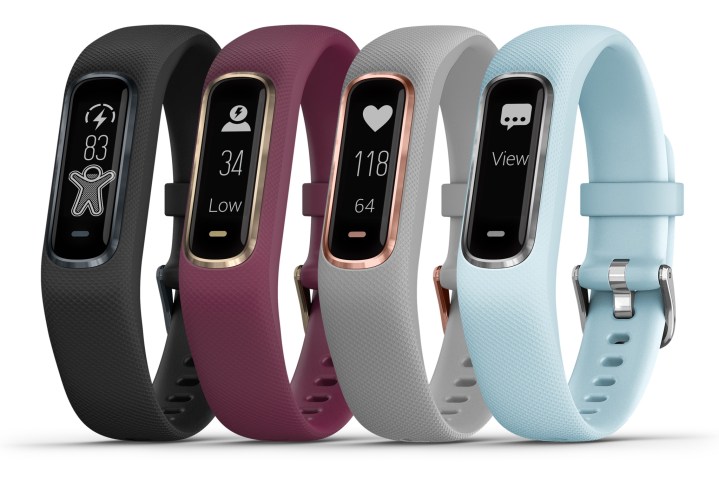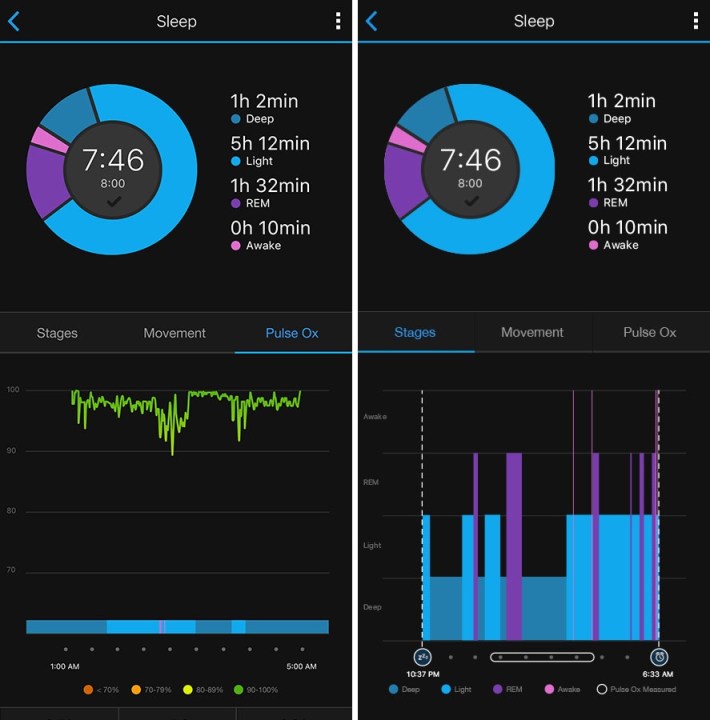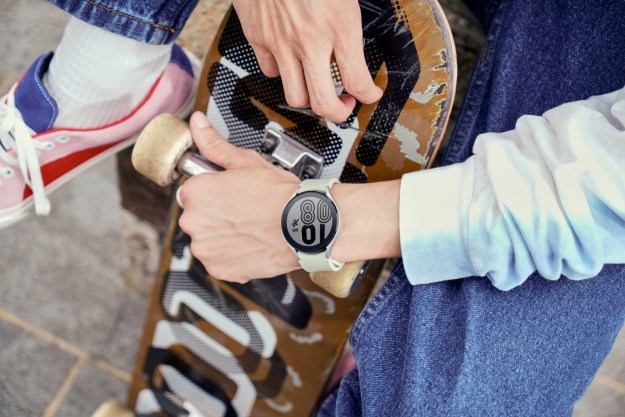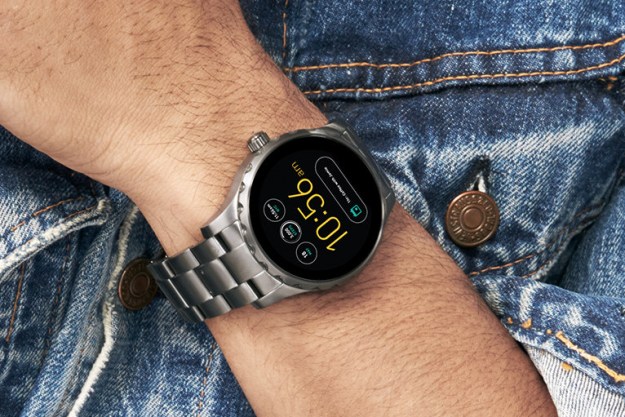Garmin is staying neck and neck with Fitbit, announcing the revamped Vivosmart 4 shortly after its competitor unveiled the Fitbit Charge 3. The new Vivosmart packs a punch, combining new hardware and software into a thinner and sleeker device. The most notable addition to the Vivosmart line is a pulse oximeter which measures blood oxygen saturation. This sensor first appeared in the Fenix 5X Plus, Garmin’s $849 multi-sport GPS watch.
Design and Display

On the outside, the Vivosmart 4 has a slim and fashionable design that looks great and feels great on your wrist. The soft and smooth silicone wristband is available in a variety of color combinations including a sleek black with slate bezel, a berry with gold bezel, a powder grey with rose gold bezel, and an azure blue with silver bezel. You still can’t change out the band in the Vivosmart 4, but these color combinations help.
Similar to last year’s Vivosmart 3, the Vivosmart 4 has an OLED touchscreen display that saves precious battery life by turning on only when you need it. You can swipe, tap, or raise your wrist to activate the display on demand. The 48 × 128 pixels display is on the small size, but Garmin does its best to make it readable by using a black-and-white color scheme along with an auto-adjust feature that responds to ambient light.
Pulse Oximetry

Underneath the hood, Garmin made several essential upgrades in the Vivosmart 4. First and foremost is the pulse Ox sensor which measures blood-oxygen saturation. Unlike the Fenix 5X Plus which uses pulse Ox for high-altitude acclimation, the Vivosmart 4 bundles its pulse Ox data into the sleep metrics where it can assist with sleep-related issues like sleep apnea. Notably absent is GPS which is present in Garmin’s Vivoactive 3 and Vivosport trackers.
Monitoring sleep disturbances is a new area of exploration for fitness manufacturers. Garmin recently rolled out advanced sleep tracking to a handful of its devices and Fitbit just bundled the feature into its new Fitbit Charge 3 tracker.
Body Battery

The new Vivosmart model also includes an updated wrist-based optical heart rate monitor that powers a new metric called body battery. Only available on the Vivosmart 4, body battery provides you with an “energy level” measurement that you can use to best time your workouts. The tracker calculates your energy level based on metrics like your resting heart rate, stress level, sleep quality, and recent workouts/activities. The higher your energy level, the more reserves you will have to crush your next workout.
Lifestyle and Smartwatch Features

Similar to its predecessors, the Vivosmart 4 keeps all our favorite fitness and lifestyle features including step counting, VO2 max, advanced sleep tracking, and stress management. The fitness tracker also can control music playback, check the current weather, and receive both incoming smartphone alerts and text messages. Garmin upped the battery life on the device to seven days and included water resistance so you can swim with it.
Availability
The Garmin Vivosmart 4 sells for $129 — $30 cheaper than Fitbit’s competing Charge 3. The fitness tracker will be available soon from Garmin’s website as well as other online and in-store retailers.




